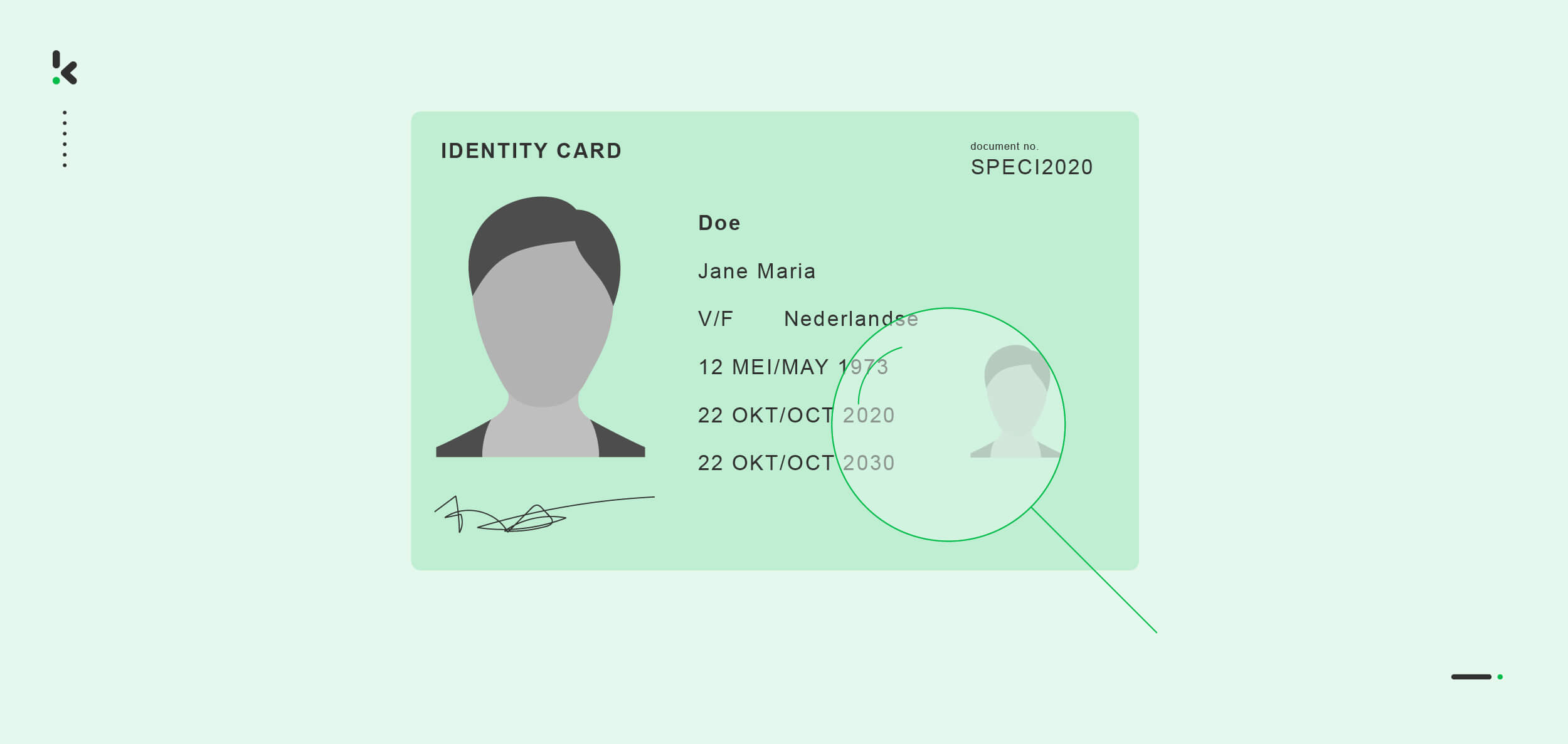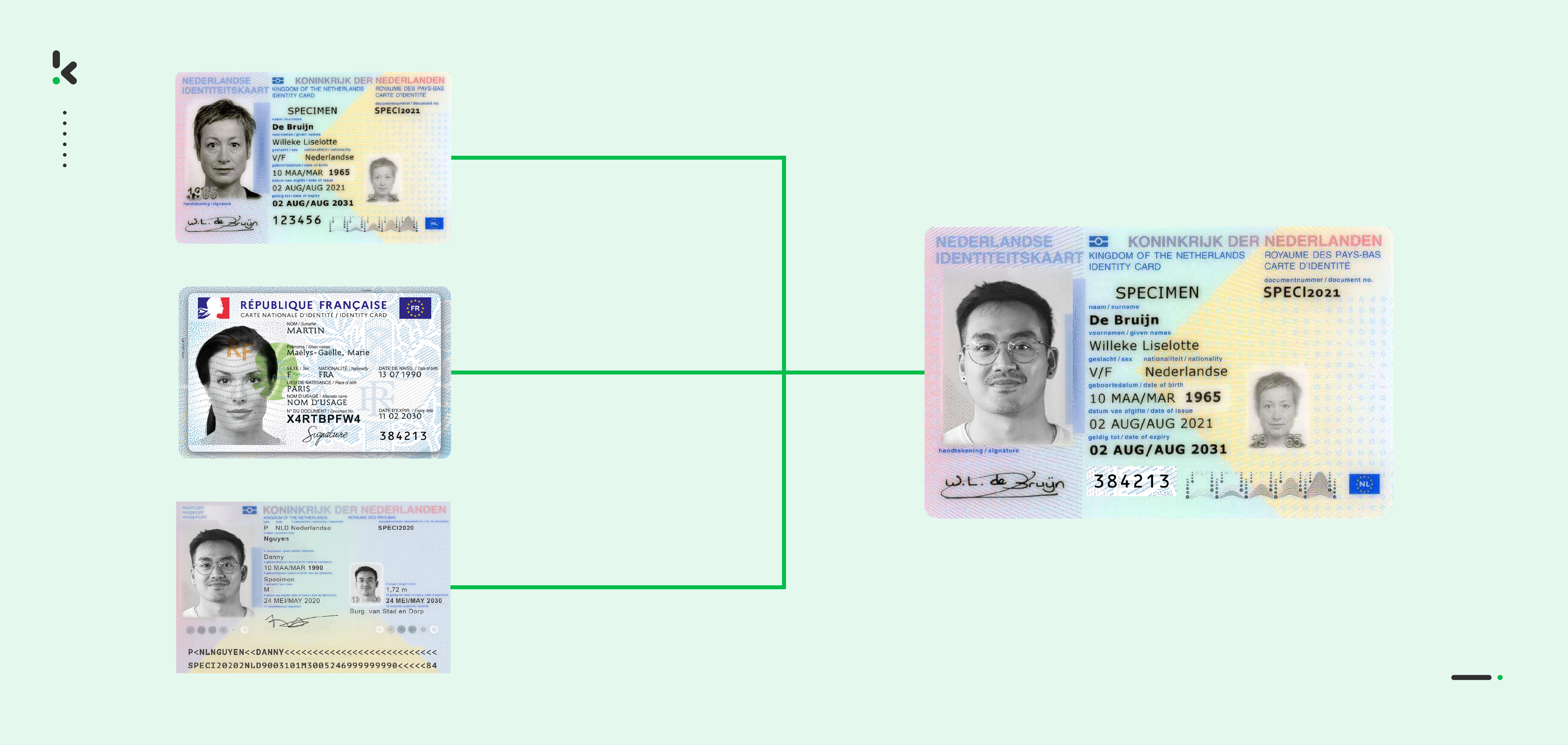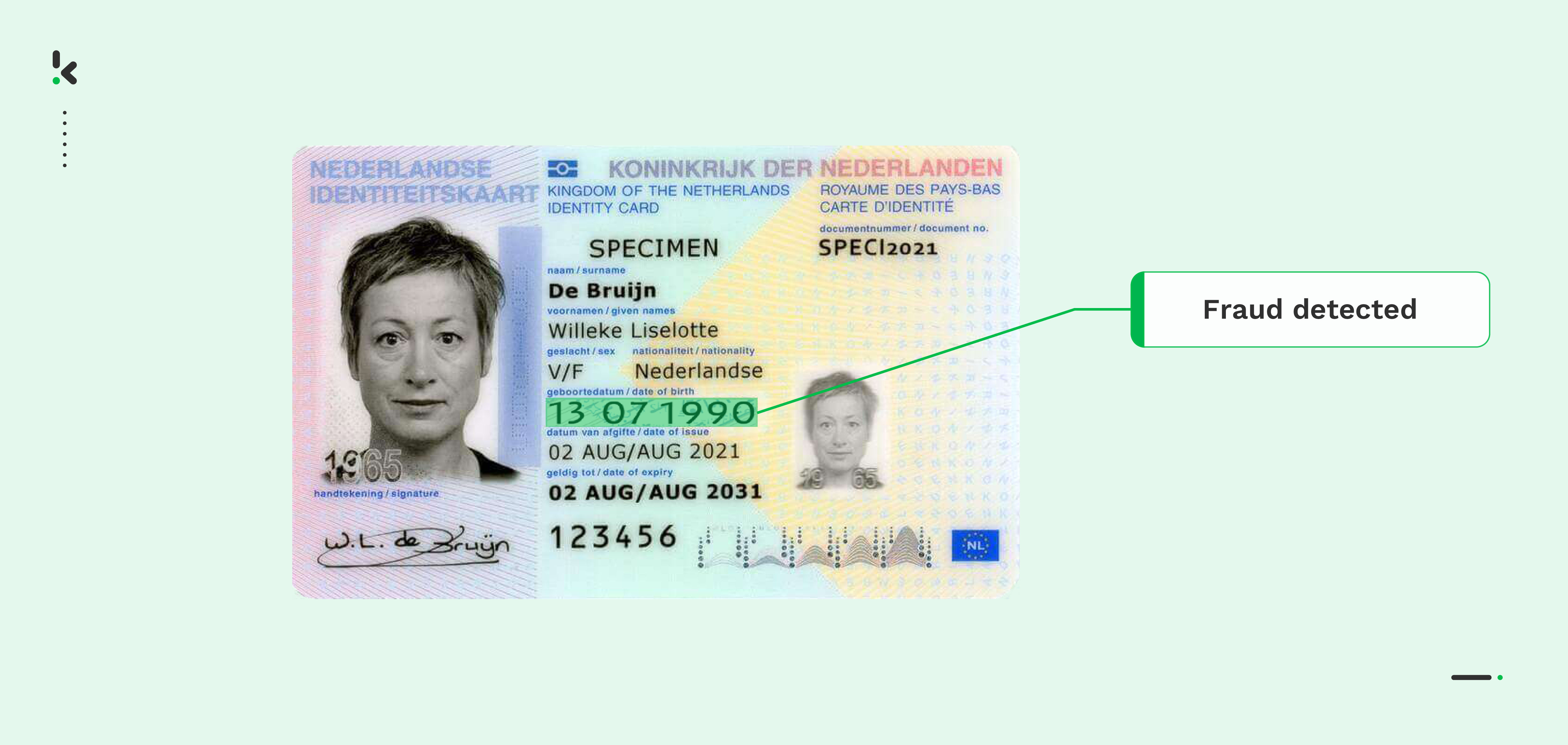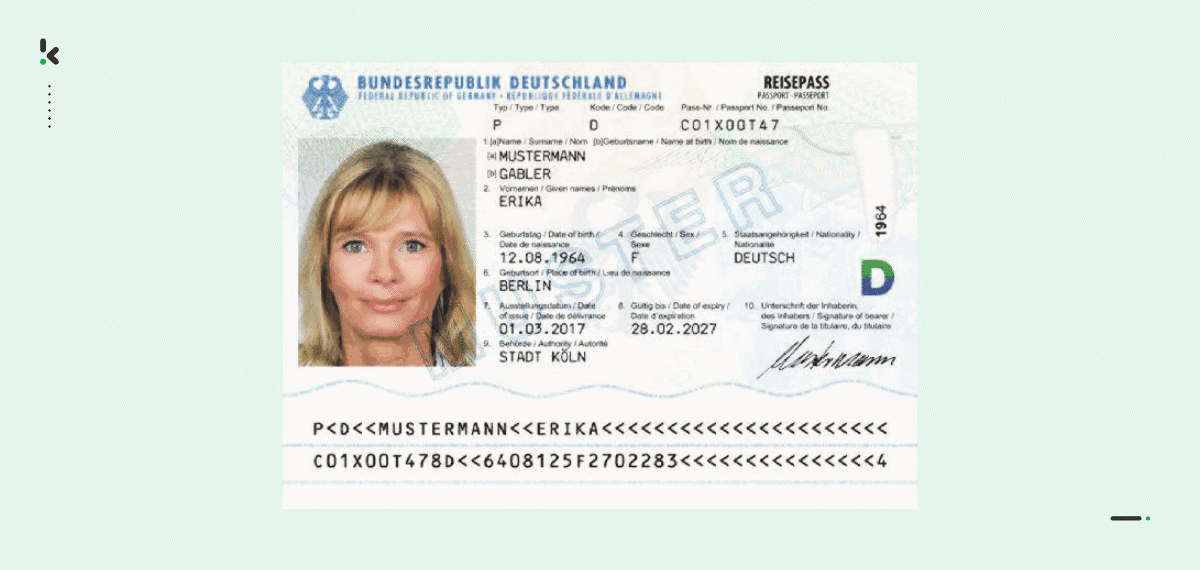

Identity documents are an important part of everyday life both in the professional world and in the casual. They are integral to our day-to-day lives and enable us to function and participate in various activities, jobs, and purchases. Therefore, it is paramount that these documents are not only genuine but also verifiable and easy to authenticate.
However, this is not always the case, and as criminal networks become more sophisticated in their ability to create fake IDs, there is an increased risk that fraudulent IDs may slip through the cracks. This is especially crucial for businesses and organizations during the customer/ employee onboarding process and the document verification process. In fact, global losses from digital fraud reached over $47.8 billion in 2024, reflecting a 15% increase year-over-year.
In this blog, we will explain how to spot a fake ID and how technologies can help in these processes.
Let’s start!
Key Takeaways
- Identity fraud is on the rise – Global losses from digital fraud exceeded $47.8 billion in 2024, with synthetic identity fraud increasing by 31%. In the U.S. alone, synthetic identity fraud is projected to generate at least $23 billion in losses by 2030.
- Fake IDs come in multiple forms – Criminals produce unaltered, manipulated, replicated, and fully manufactured identity documents.
- Manual verification is no longer enough – As fraud techniques become more sophisticated, relying solely on human inspection increases security risks.
- Advanced verification technologies are essential – Tools such as OCR, NFC scanning, AI-driven deepfake detection, and MRZ validation help businesses detect fake IDs with greater accuracy.
Different Types of False IDs
There are many ID documents that criminal networks and fraudsters create, including passports and ID cards. Among these, national ID Cards are the most targeted type of document, accounting for 40.8% of all document fraud, according to the 2025 Identity Fraud Report by Entrust.
To help you spot a fake ID, we first break it down into 4 groups:
- Unaltered and borrowed ID – This is a genuine document that is being used by someone else. For example, borrowing and using a friend’s ID to make a purchase because you are not of age but they are.
- Manipulated ID – This is a genuine document that has been altered in some way. For example, a document in which the date of birth (DOB) has been changed.
- A replica – This is a fake ID replicating a genuine ID. For example, a driver’s license not issued by a legitimate governing body.
- Manufactured ID – This is a fake document that does not exist and is created through fraudulent means.
We will go into further detail on the difference between a manufactured and manipulated ID later below.
How Are Fake IDs Made?
Although it is illegal to possess, produce, or distribute a false ID that can be mistaken for an official government-issued document, they persist and are a lucrative source of income for criminal enterprises around the world. There are 2 main ways fraudulent identity documents are made: manufactured and manipulated. For the most part, the 4 types of fake IDs explored earlier fall into these 2 groups.
Manufactured ID
A manufactured ID is an entirely fraudulent document. Sometimes, these combine valid ID information to create a fake document. For example, these can include the DOB of one person, the address of a second, and the social security number of a third person. This is still a fake document, but it combines real, genuine information with false, fraudulent information.


Manipulated ID
In contrast, a manipulated ID is an identity document that, as the name suggests, has been manipulated, changed, or altered. In this case, this involves changing things like the DOB or the photo on an identity document often with digital programs like Photoshop.
Identity fraud, sometimes referred to as synthetic identity fraud, is a growing problem for organizations and businesses around the world and they must be equipped with the skill, knowledge, and technology to ease the process of spotting a fake ID.


3 Easy Ways to Identify a Fake ID
When checking for a fake ID, there are key indicators that can help you spot fraudulent documents. Some are easy to detect with the naked eye, while others require advanced verification technology. The level of sophistication varies, making some fakes more obvious than others. Here’s what to look for:
1. Missing security features
Most genuine ID documents have security features that are difficult to replicate, such as holograms, kinegrams, watermarks, barcodes, UV light images, and raised lettering. If you find these absent from an ID document, then it should be an indicator that this is not a genuine document.
2. Incorrect information
The incorrect information on an identity document often makes spotting a fake ID easier. A fake ID may have incorrect information, such as the wrong address or DOB, and even spelling errors in the name. In addition, inconsistent layouts can be a good indicator that you are looking at a fake ID. Using multiple identity documents for cross-verification can be a good way around this.
3. Physical features
The most obvious telltale signs you are dealing with a fake ID are the physical features. Genuine identity documents are generally made of sturdy materials, which makes them stand out from their fraudulent counterparts. When looking out for a fake ID, keep an eye out for the font and size and especially for the consistency throughout the document. In addition, the print quality can be a dead giveaway; a fake ID may have uneven edges, blurred text, and images. When examining a physical ID, these are some signs to look out for.
Some of these signs are easier to spot with the naked eye. However, as fraud techniques become more sophisticated – such as deepfake attempts occurring at a rate of one every five minutes, according to Entrust’s report – detecting fake IDs manually is becoming increasingly difficult.
Therefore, it is increasingly important for organizations to adopt ID verification software in their onboarding processes. In the next section, we’ll take a closer look at how verification technologies can help make this process more secure and efficient.
How Technology Can Detect Fake IDs Instantly
Although the authentication of identity documents can be done manually, this is subject to errors and mistakes. There are document verification technologies that can make the process of spotting fake IDs easier. Such technologies are OCR, NFC, AI, and MRZ scanners. Let’s take a look at how each of them can help spot fake IDs.
1. With OCR (Optical Character Recognition)
What It Does:
OCR technology allows document verification software to extract critical information from identity documents, such as a name, date of birth, document number, signature, and expiry date. This extracted data can then be cross-checked against internal databases or official government records to ensure that the information exists, is valid, and that the individuals are who they claim to be.
How Does This Help?
- Banking & Financial Services – Speeds up KYC (Know Your Customer) verification, reducing fraud in online account openings.
- Retail & Hospitality – Automates age verification for alcohol and tobacco purchases.
- Border Control & Travel – Quickly verifies passports at security checkpoints.
2. With NFC (Near Field Communication)
What It Does:
NFC technology allows smartphones or other devices to read encrypted chips embedded in identity documents (such as biometric passports). By scanning the chip, the system authenticates the document’s legitimacy, preventing identity fraud.
How Does This Help?
- Airports & Border Control – Verifies e-passports instantly, reducing waiting times at immigration checkpoints.
- Car Rental & Hotel Check-ins – Enables contactless ID verification, improving customer experience.
- Government Agencies – Ensures the authenticity of national ID cards and driver’s licenses.
3. With MRZ (Machine-Readable Zone)


What It Does:
The Machine-Readable Zone (MRZ) is a specific section found in identity documents, particularly passports, which contains the personal data of the document holder in a standardized, hard-to-fake format. Businesses can scan this area with MRZ scanners to quickly extract and verify personal information.
How Does This Help?
- Banks & Fintech Companies – Prevents fraudulent account openings by verifying MRZ codes against government-issued IDs.
- Event Security & Venues – Speeds up entrance checks by validating guest identities at concerts or sports events.
- Airlines & Travel – Reduces fake ticket purchases by ensuring passport authenticity.
4. With AI Algorithms
What It Does:
AI-powered ID verification tools analyze EXIF data (Exchangeable Image File Format) in images to detect editing history, alterations, and potential fraud. If an image has been altered in software like Photoshop, AI can flag suspicious modifications during the verification process.
How Does This Help?
- Online Marketplaces & E-commerce – Detects fake IDs used for fraudulent transactions.
- Gambling & Gaming Platforms – Prevents underage users from bypassing ID checks.
- HR & Recruitment – Ensures that submitted IDs for job applications are legitimate.
As more companies begin to lean into digital onboarding processes, there is an increasing shift toward a software-focused approach to spotting a fake ID as it is becoming increasingly difficult to spot them with the human eye. An example of such software is Klippa DocHorizon, which we will explain in greater detail in the following section.
Eliminate Identity Fraud with Klippa’s Verification Solution
Manually assessing identity documents for fraud can be time-consuming, error-prone, and inefficient. With Klippa DocHorizon, you can eliminate these challenges by leveraging cutting-edge OCR, Machine Learning, and AI-powered document verification to instantly detect fake IDs and enhance security.
For industries like finance, banking, and fintech, simply validating identity documents isn’t enough to meet AML (Anti-Money Laundering) and KYC (Know Your Customer) regulations. That’s why Klippa offers a fully automated identity verification solution that ensures seamless, accurate, and compliant authentication.
With Klippa, you can:
- Parse and scan passports, ID cards, and driver’s licenses.
- Authenticate identity using selfie verification, biometric analysis, NFC scanning, and liveness detection.
- Instantly detect fraud with AI-powered document fraud detection.
By automating these processes, your organization can eliminate human errors, accelerate customer onboarding, and enhance fraud prevention – all while saving valuable time and resources.
Ready to streamline verification and protect your business? Book a free online demo below!
FAQ
Indicators of a false ID include missing security features, incorrect personal information, poor print quality, inconsistent fonts, and altered images. Advanced fraud tactics, such as deepfake manipulation, are also becoming more prevalent.
Manual ID verification is prone to human error, slower processing times, and an increased likelihood of missing sophisticated fraud attempts. As fraud techniques become more advanced, relying solely on manual verification can expose businesses to security threats.
AI analyzes document metadata, detects inconsistencies, and flags potential forgeries, making it a crucial tool for businesses and organizations looking to enhance security.
Klippa utilizes AI-powered document verification technologies, including OCR for extracting and cross-checking data, NFC scanning for verifying encrypted chip information, and deep learning algorithms to detect manipulated images, inconsistencies, and deepfake attempts. These tools work together to ensure highly accurate ID verification.
Klippa’s document verification solutions comply with international security standards, including GDPR and AML/KYC requirements. Our technology ensures data protection, encryption, and secure processing to meet compliance needs.